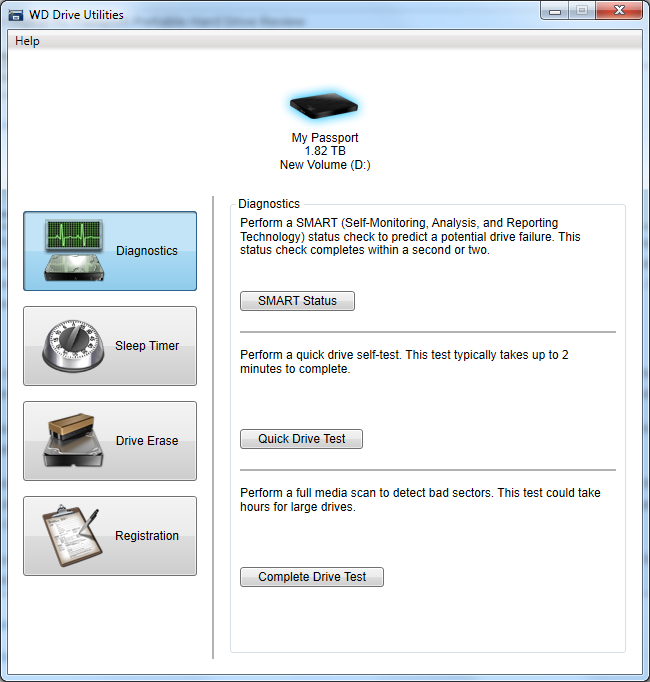
- #Wd drive utilities high sierra how to#
- #Wd drive utilities high sierra mac os#
- #Wd drive utilities high sierra code#
- #Wd drive utilities high sierra mac#
If you can't start up from macOS Recovery, you can use a different startup disk instead.If you need help, please contact Apple Support.
#Wd drive utilities high sierra mac#
If your disk or volume still doesn't appear in Disk Utility, or Disk Utility reports that the erase process failed, your disk or Mac might need service.If you're erasing an external drive, make sure that it's connected directly to your Mac using a cable that you know is good.Shut down your Mac, then unplug all nonessential devices from your Mac.

If your disk or volume doesn't appear, or the erase fails The Get Info window shows the Format of that volume. Select the volume in the Finder, then choose File > Get Info from the menu bar.The File System column on the right shows the format of each volume. Open System Information and select Storage in the sidebar.For more detail, choose File > Get Info from the Disk Utility menu bar. Select the volume in the Disk Utility sidebar, then check the information shown on the right.If you want to know which format is currently in use, use any of these methods: If you want your Mac to be able to start up from the volume you erased, reinstall macOS on that volume.You might be asked to enter your Apple ID. Otherwise, click Erase to erase just the selected volume. In that case, you should erase the volume group.

#Wd drive utilities high sierra mac os#
Format: Choose APFS or Mac OS Extended (Journaled).Name: Type the name that you want the disk to have after you erase it.Click Erase, then complete these items:.Select the disk that you want to erase.In this example, Apple SSD is the startup disk: The disk your Mac started up from is at the top of the list. The sidebar now shows your disks (devices) and any containers and volumes within them. Choose View > Show All Devices from the menu bar in Disk Utility.If you're not erasing the disk your Mac started up from, you don't need to start up from macOS Recovery: just open Disk Utility from the Utilities folder of your Applications folder. Then select Disk Utility from the Utilities window and click Continue.
#Wd drive utilities high sierra how to#
How to erase your disk Wd Drive Utilities
Before continuing, make sure that you have a backup of any files that you want to keep. So he showed me how to totally erase the disk in Terminal, and then format it.įirst you need to unmount the NTFS disk, so look in disk utilities to see what device it isErasing a disk or volume permanently deletes all of its files. The disk has a higher level partition that the High Sierra (disk utility) doesn’t’t know how to delete. I made notes and am pasting them in below in case they can help anyone else: Got onto a helpful dude at apple who sorted out the problem, well not the problem, but a fairly easy workaround in terminal. I had this problem today, and lost half a day trying to work it out. Then you will see the progress as it formats it, then the disk will mount on the desktop and you’re ready to go. Now you need to partition the disk as Mac os journaled, so run the following command, and again change the disk number where appropriate, and change the name in the quote marks to whatever you want to call your disk:ĭiskutil partitionDisk disk3 GPT JHFS+ "ENT" 0g You should get a result that looks like thisġ048576 bytes transferred in 0.673985 secs (1555785 bytes/sec)” Sudo dd if=/dev/zero of=/dev/rdisk3 bs=1024 count=1024 It will prompt you for your password, so type it in and hit return: Then you need to totally erase the disk, removing the microsoft higher level partition, so in terminal run the following command (again, replace the disk number with the appropriate number). You should get something saying “Forced unmount of all volumes on disk3 was successful” if all goes well.

#Wd drive utilities high sierra code#
Open terminal and enter the code below, changing disk3 to whatever your device is: The device is called disk3s2, but you just want to call it disk3 (leave out the s2), or disk2, or whatever it is coming up as.


 0 kommentar(er)
0 kommentar(er)
